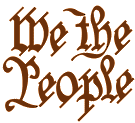
The Bill of Rights

 |
The Bill of Rights |
 |
IntroductionThe Bill Of RightsWant To Learn More? |
Introduction
By 1783, the American Revolution was over. The United States had won. However, our new national government was dangerously weak; the thirteen American states sometimes acted like separate countries, the states were quite independent from one another, and each state had a separate government. Many times, states argued among themselves, each state controlled its own trading with other countries. In May 1787, a group of men who met in Philadelphia included such important people as James Madison, Edmund Randolph, William Paterson, Benjamin Franklin, and George Washington. The leaders of the country realized that the federal, or national, government had to be stronger. They knew things had to change. A new nation needs a written plan of government, the U.S. Constitution. On September 17, after four long, hot months of secrete work, the Constitution was ready, now the delegates had to go back to their states and persuade the people to accept, or ratify, the Constitution. They decided that if nine of the thirteen states accepted the Constitution, it would become the law of the land. Americans everywhere debated the new Constitution; some people were in favor of the Constitution. They were called Federalists, but some people didnít like the Constitution. They were called Anti-Federalists. Many Anti-Federalists thought that the Constitution gave the federal government too much power; peopleís individual rights need to be protected; the Constitution needed a bill of rights to guarantee their individual freedoms. By June 21, 1788, finally nine states approved the Constitution, and it became official. The only states that rejected the Constitution were Virginia, New York, North Carolina and Rhode Island. George Mason of Virginia had written his own stateís famous Virginia Declaration of Rights. The Federalists knew it was important for Virginia to accept the new government, the state was one of the nationís largest and wealthiest. In 1789 April: Congress officially meets for the first time: George Washington is sworn in as first U.S. president; June: Madison introduces his proposed amendments to the Constitution. Despite his own doubts about the bill of rights, he worked hard to make it a reality. September: Congress sends twelve amendments to the state for their approval. December 15, 1791: The first ten amendments to the Constitution take effect. These amendments became known as the Bill of Rights |